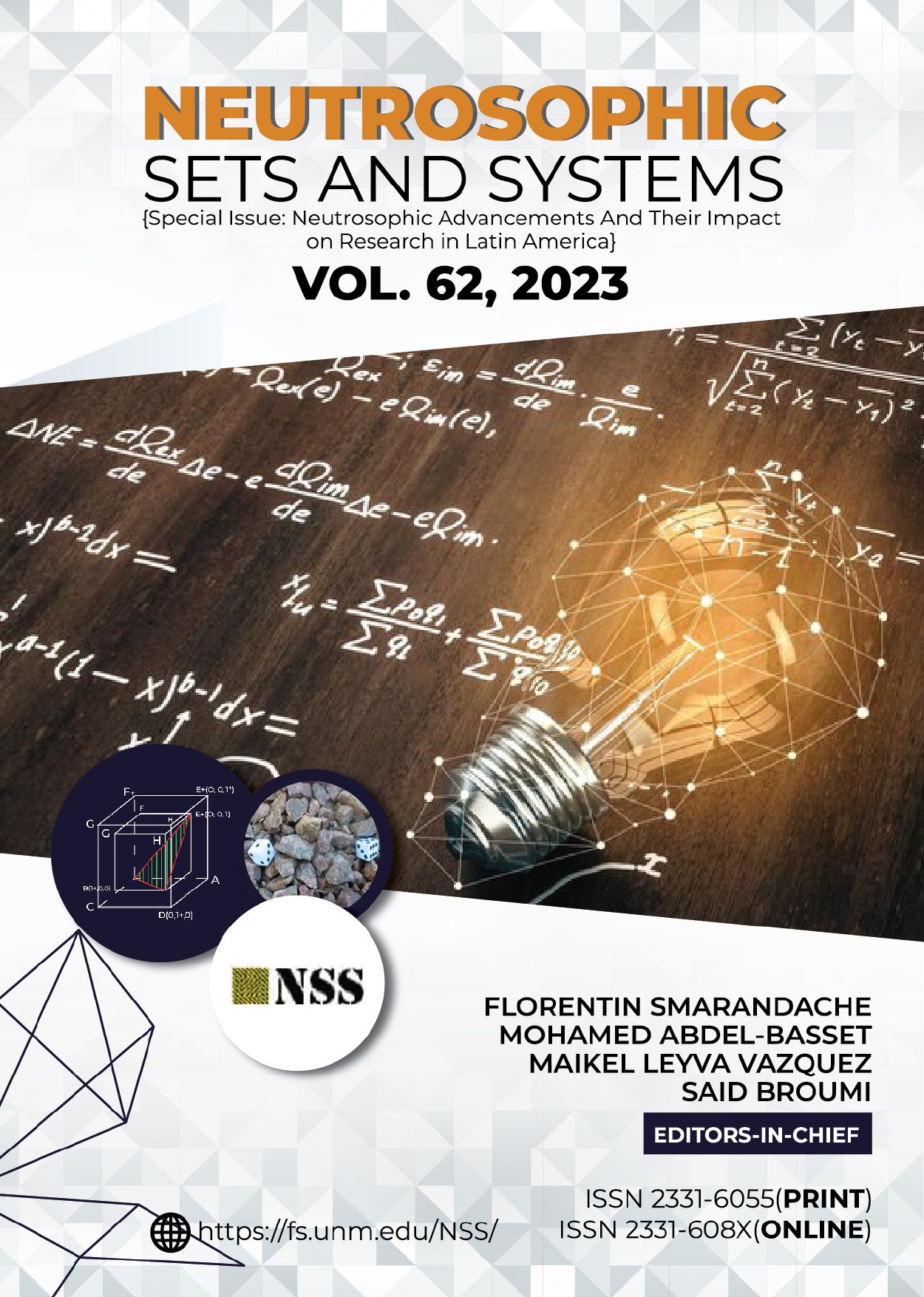Neutrosophic Evaluation of Dental Implant Success Rates
Keywords:
Neutrosophy, dental implants, success rates, dentistry, patientsAbstract
This article introduces the concept of neutrosophy, a philosophy that promotes neutrality and balance in decision
making and evaluation of situations within the medical field. Neutrosophy, while not yet widespread, may prove useful in
ethically complex medical scenarios by encouraging balanced decisions and multiple perspective consideration. In implant
dentistry, the success rates are influenced by factors including implant location, patient's general health, implant type, and
surgical technique. The article employs a neutrosophic approach to assess the success rates of dental implants in a more com
prehensive and unbiased manner. The approach considers both quantitative and qualitative aspects, along with uncertainties,
to achieve a balanced evaluation. The findings indicate that the top priority criterion is the absence of pain or discomfort,
followed by functionality and long-term maintenance, while the survival rate of the implant is less preferred. In summary,
neutrosophy presents a valuable approach to appraise the success rates of dental implants in a well-rounded and ethical manner,
incorporating diverse viewpoints that can benefit both dental practitioners and patients in decision-making.
Downloads
Downloads
Published
Issue
Section
License
Copyright (c) 2023 Neutrosophic Sets and Systems

This work is licensed under a Creative Commons Attribution-NonCommercial-ShareAlike 4.0 International License.







